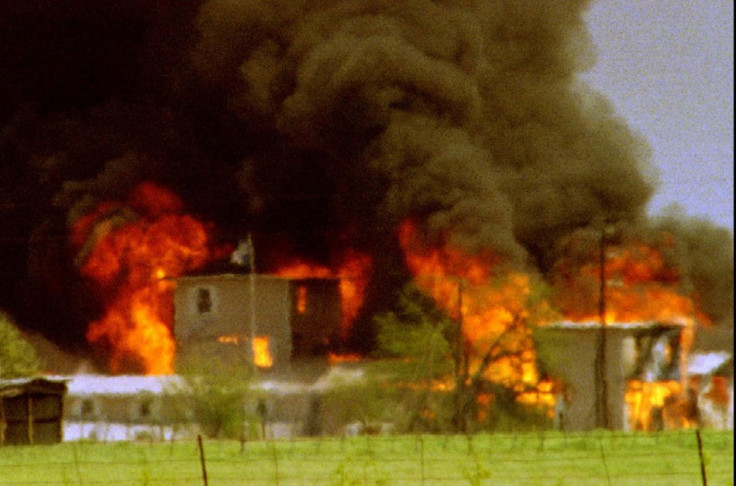Texas Fertiliser Factory Blast Coincides with Waco Siege Anniversary

The sight of a burning fertiliser factory in Waco is an eerie reminder of another dark chapter in the history of the small Texas town.
Around 15 people are believed to have died when the West fertiliser plant exploded in a gigantic ball of flames, this morning.
In the early stages of the investigation, police are not ruling out sabotage or some other kind of foulplay, which may have caused the tragedy.
One element unlikely to be overlooked as efforts continue to establish what happened, is the close vicinity and coincidence of the explosion in relation to another moment of infamy in local history - the Waco massacre.
Twenty years ago, flames engulfed another building in the town and tens of lives were lost in events which became a significant part of modern American history.
In 1993, government agents and cult members battled each other in a siege laid by the FBI on a compound containing men, women and children led by David Koresh - who thought he was a prophet from God.
It all began in late February and ended 50 days later in a violent bloodbath amid explosions on April 19. The eve of the landmark 20th anniversary of the Waco siege is when the West fertilizer factory has erupted in a massive ball of flames.
The Waco siege resulted in the deaths of 82 people, including 76 members of the Branch Davidians religious sect - a splinter group of the Seventh Day Evangelists. Among them were 33 victims from Britain, including one six-year-old child, Melissa Morrison.

A huge wealth of conspiracy theories blossomed in the aftermath of the siege, relating to the timing and descriptions of events in the final assault on compound residents by the FBI.
According to reports, deranged cult leader Koresh prevented members from surrendering to the authorities and armed his commune with guns and ammunition in preparation for the coming battle with with Federal forces.
In the months before the now-infamous Waco siege, Koresh had displayed Messianic behaviour and claimed he was on a mission from God. He gathered his small band of followers at the Carmel centre to await the second coming of Christ.
The cult clashed with the US authorities when the Bureau of Alcohol, Tobacco and firearms suspected Koresh of producing drugs and hoarding guns.
A team tried to execute a search warrant, resulting in a violent gun battle. Four government agents and six cult members were killed. After this, the FBI laid siege to the Waco compound.
That lasted 50 days and attracted media attention across the world. It was reported that cult members were stopped from surrendering. A second and final raid on April 19 by the FBI resulted in the deaths of Koresh and scores of others - mainly young people.
A number of women and children inside the compound, named the Mount Carmel centre by the Branch Davidians, were found gassed to death with cyanide.
Ever since conspirarcy theorists and anti-government extremists have considered the Waco Siege a state-led massacre, launched by an authoritarian and anti-liberty regime ruling the USA.
Timothy James McVeigh the American terrorist who detonated a truck bomb in front of the Alfred P. Murrah Federal Building in Oklahoma City on April 19, 1995, killing168 people and injured over 800 (the deadliest act of terrorism within the United States prior to the September 11, 2001 attacks) was a militia movement sympathizer and Gulf War veteran, who sought revenge against the federal government for their handling of the Waco Siege.
Twenty years on, the fertiliser factory explosion serves as an uncomfortable reminder of another dark chapter in Waco's history.
© Copyright IBTimes 2024. All rights reserved.









